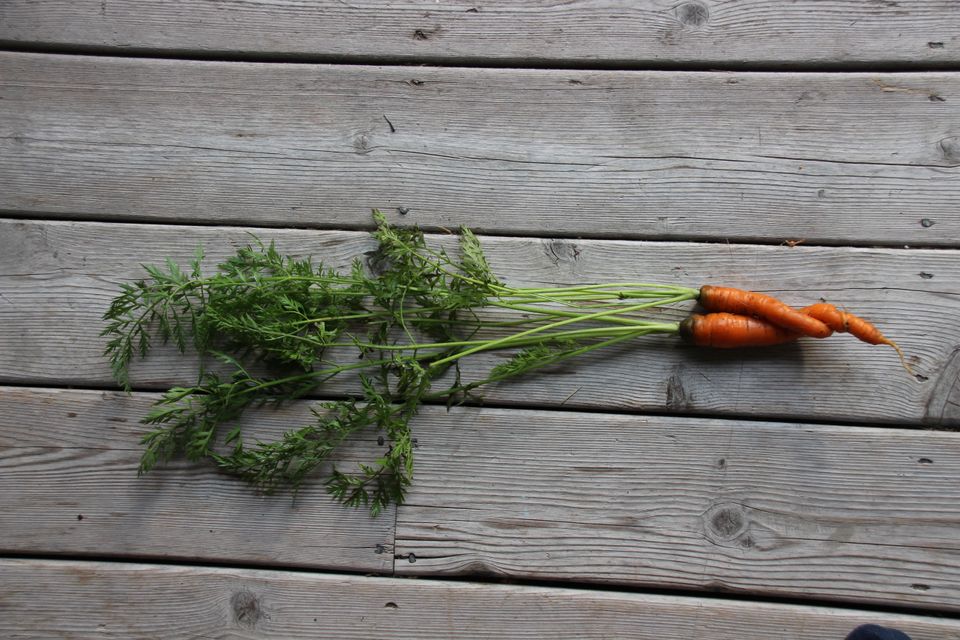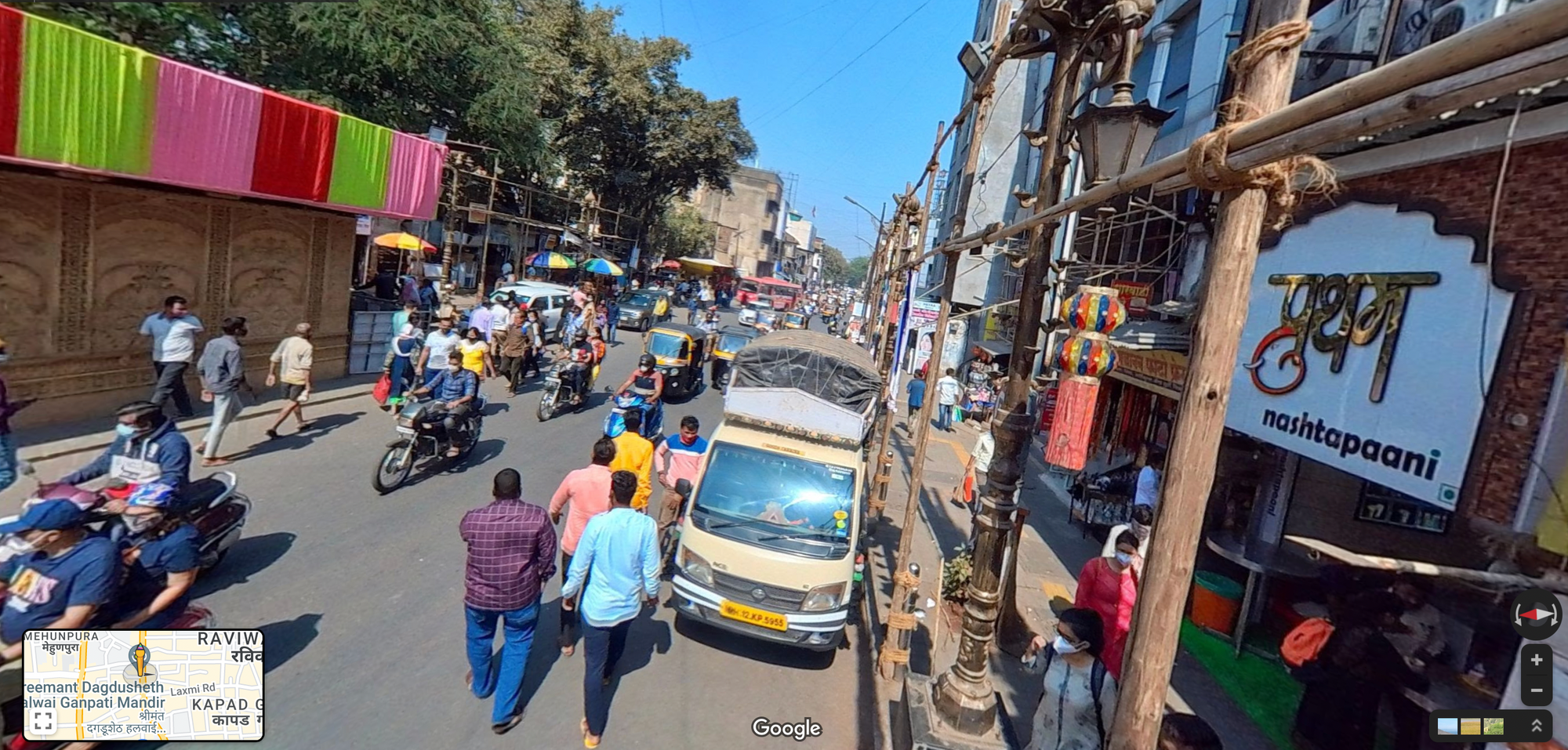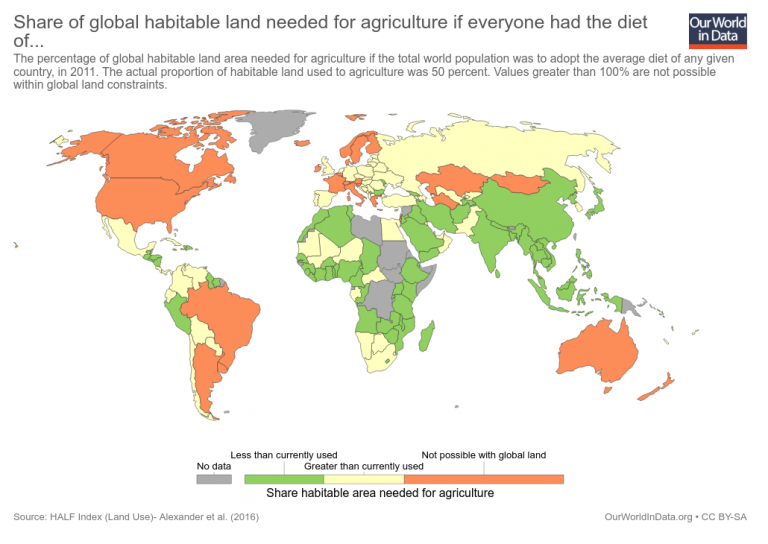Veg or Non-veg?

In a prior post about the Beltsville Small White turkey, I mentioned that the world would have a lot more vegetarians if we insisted on heritage breed meat products, instead of the selectively-bred hybrids most of us enjoy daily. Do you know who has a lot more vegetarians? India.
I've been to India a couple times, to the interior city of Pune, and its surrounding countryside. Two things that struck me while there were the number of people (no surprise) and the amount of food around.
People People Everywhere
Everyone knows more than a billion people live there, and that's a lot. Most of us have been to crowded places before; we can imagine busy streets. But you can't really "feel" the population until you go there and walk around. There won't be a billion people where you are - it's a fair size country. It's more subtle. It's in the way things move, the space people take for themselves, the things they are comfortable with, and the things they're not.
A moment of education for me happened on my way to the airport at the end of a trip there. The man driving me insisted I see their historic downtown and visit the Dagadusheth Halwai Ganapati Temple, the wall of which is just visible on the left, below. Things were much busier when I was there, during rush hour. While standing across the street, where the lady in the red dress is, a girl of maybe 4 or 5 skipped by in a neatly pressed school uniform and a bright, Disney-themed backpack. She tossed a confused smile that said, "wow, you look weird, oh well, have a nice day," zig-zagging through people like it was a game. Doubling back, she tugged at her young mom to keep up, and skipped ahead once more.

The juxtaposition of me feeling uneasily foreign, uncomfortable in the heat, the crowd, and the utterly incomprehensible yet clearly effective, unwritten rules governing the movement of cars, motorcycles and pedestrians in the same space, and this intimate, joyful, and entirely relatable moment between a young mom and her daughter, taught me something about the people of India. I'd thank little miss Minnie Mouse if I could.
Rivers of Food
The second thing that struck me was the volume of food. People eat. All of them. I'm from Canada, the second largest country in the world, with hardly more people than India's single largest city, New Delhi, and India has 45 more cities with populations of at least a million people. How the heck do they create all that food?
Fun Facts
One in every six humans lives in India.
72% of Indians live rurally (in Canada, fewer than 20% live rurally).
India has three times Canada's arable land with which to feed 36 times the population.
40% of Indians work in agriculture.
Less than 1% of Canadians work in agriculture.
Worldwide, 80% of farmland is used to raise animals or grow food for them, but animals provide only 20% of our calories.
Dining in India
Unless you can't tolerate spicy food at all, India is an incredible place to eat. Everything is fun about it, including the incessant "no spice?" question you get as a visible minority sitting down to eat, and the "veg or non-veg?" question that begins each menu introduction.
Don't look for beef. It's illegal because cows are sacred in India (I did enjoy a mutton whopper at a Burger King though).
Back to the farm
So what does any of this have to do with a small farming story in Canada?
Not a lot, directly, but it's helpful to know a bit about the bigger picture in which we occupy a tiny pixel, to understand how production of the food we depend on weaves into the lifestyles we enjoy, and our kids might enjoy. My dad is a mathematics educator and he would say, "you can't escape plain math." (He's retired though, and if you ask him to do any math he'll remind you of that).
He's right. It's plain numbers. Today, we use 50% of the earth's habitable land area for agriculture. By the time my kids are my dad's age, there will be 20% more people on the planet. That will add more than another India worth of people. Unless we break our addiction to synthetic fertilizers and tillage, my kids will also see topsoil bankruptcy, as discussed in Back to the Root. We can't escape the math.
If the global population wanted to eat like the average person in Canada next year, our current agricultural practices would need 129% of the entire world's habitable land area to produce this food. The math doesn't work.
If the global population wanted to eat like the average person in India next year, we could return to forest 30% of the world's land that is currently consumed by agriculture. This math works great - and not just for food.
India doesn't have all the answers, to be clear. Many, many people live in abject poverty. They pollute their air horribly by burning crop residues and using countless old and dirty engines everywhere. They are burning through their topsoil too, hammering it with fertilizers. What we can learn from India is a bit of math about feeding our growing population, sufficiently and equitably. We'll be forced to change, eventually, unless we insist on having much more than others, at their expense, which would not be very Canadian at all.
What can I do?
One easy thing we can do is answer "veg" a little more often. It will save you money, too, and everyone loves that math.
SOURCES

Thanks for reading. Send me an email anytime. You can peruse other musings of this wannabe farmer from the homepage, or click on my picture, below.
I do my best to present accurate information in an objective way, but none of us are immune to unconscious biases, so let me know if something I've written strikes you as misleading - thanks!
